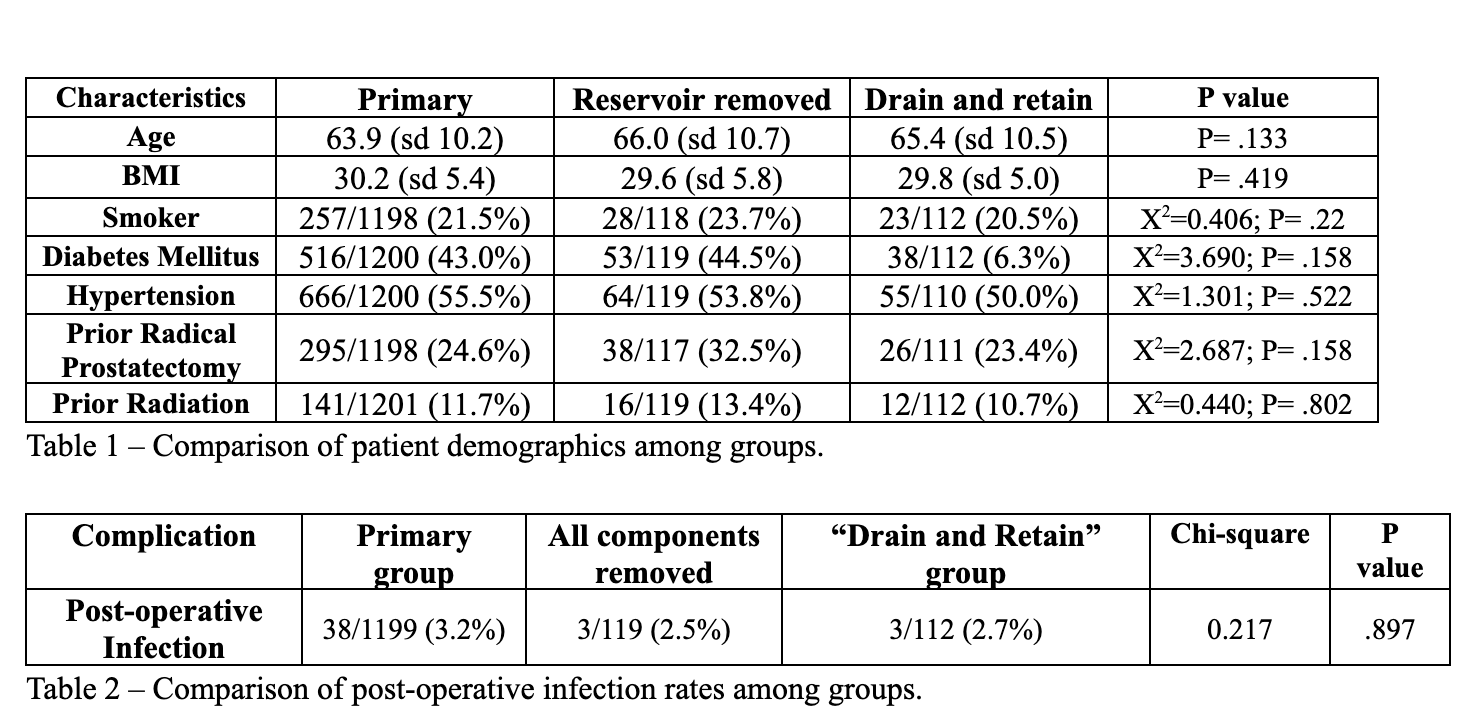Back to 2025 Abstracts
Contemporary Findings Regarding the Efficacy and Safety of the “Drain and Retain” Maneuver for Urologic Prosthetic Reservoirs During Inflatable Penile Prosthesis Revision Surgery
Ambrose Orr, MD1, Thairo A. Pereira, MD
2, Jacob Rust, MD
2, Jacob Good, MD
2, Stephen Harrington, MD
1, Peter J. Arnold, MD
2, Thomas Alvermann, MD
3, Remington Lim, MD
1, Nicholas Moll, MD
1, David Barham, MD
4, Christabel Egemba, MD
5, Richard Bellemare, MD
1, Martin Gross, MD
1, Muhammed Hammad, MD
6, Mike Hseih, MD
7, Alex Huynh, MD
8, Aaron Lentz, MD
8, Brent Nose, MD
8, Jay Simhan, MD
9, Faysal Yafi, MD
6, Bernie Helen, MD
2.
1Dartmouth Hitchcock Medical Center, Lebanon, NH, USA,
2Indiana University, Indianapolis, IN, USA,
3Geisel School of Medicine at Dartmouth College, Hanover, NH, USA,
4Brooke Army Medical Center, Fort Sam Houston, TX, USA,
5University of Miami Miller School of Medicine, Miami, FL, USA,
6University of California, Irvine, Irvine, CA, USA,
7University of California, San Diego, San Diego, CA, USA,
8Duke University, Durham, NC, USA,
9Fox Chase Cancer Center, Philadelphia, PA, USA.
BACKGROUND:Removal of urologic prosthetic reservoirs (UPR) during revision surgeries carries significant risk of injury. Over the last decade, the “drain and retain” maneuver has been increasingly implemented to safely leave decommissioned UPRs in place. We analyzed the efficacy and safety of the “drain and retain” maneuver with a contemporary multi-institutional cohort.
METHODS:Patients who underwent inflatable penile prosthesis (IPP) surgery at seven high volume centers in the United States between July 2016 and June 2024 were reviewed. We compared patients who underwent revision IPP surgery and subtotal device removal with “drain and retain” to those who had complete component removal and exchange. Explant cases for infection and revision cases using the original UPR were excluded. Postoperative infection rates were compared to patients receiving primary IPP surgery as a control group.
RESULTS:1,201 primary IPP cases and 231 revision cases were included. Among the revision cases, 112 (48.5%) utilized the "drain and retain" technique, while 119 (51.5%) involved complete reservoir removal. There were no statistically significant differences in postoperative infection rates (p=0.897) among the groups (Table 2). There were no statistically significant differences in postoperative infections when stratified by different prosthesis types (p=0.987). Regarding non-infections complications, there were no significant differences between the “drain and retain” group compared to revision cases where all components were removed. (p=0.393).
CONCLUSIONS: The "drain and retain" strategy is a safe approach for IPP revision surgery. It avoids the potential morbidity of dissection into the retropubic space while maintaining infection and complication rates comparable to primary IPP cases.

Back to 2025 Abstracts
